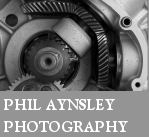


Situated on Cherrywood Road, Bordesley Green, Birmingham, the company was established by bicycle maker George W. Hands who, in 1904, made his first motor cars, a 10 hp four cylinder model. The firm briefly made some larger types but it was in the light car field that they specialised using proprietary White and Poppe engines. The cars were successfully raced in France in the Coupe de l'Auto series.
Calthorpe produced motorcycles from 1909 to 1947.
The machines were built by the Minstrel and Rea Cycle Co of Barn Street in Birmingham.
1909 Late that year, after many successful years in the motor car trade, the company made its motorcycle debut at the Stanley show. As with their cars, the motorcycles were fitted with a 3½ hp White and Poppe engine. They also had a chain-driven Simms magneto, Amac carburettor, belt drive and Druid forks.
1912 They used Precision engines and began to add further models, including a lightweight. Then came a model with water cooling.
1914 The Calthorpe Minor was produced with a 1¼ h.p. engine and a two-speed gearbox in the crankcase.
1915-1922 A two-stroke model appeared in 1915 - this used a JAP engine. It continued for 1916 and from then on a 2¾ hp four-stroke and 2½ hp two-stroke, both with Enfield gears were built. These continued well into the post-war years.
1922 The two-stroke also became available with a single speed and belt drive as an option. They were then joined by a 350cc two-stroke with a three-speed Burman gearbox and chain-cum-belt transmission.
1923 Another version of that model became available with sidecar. The four-stroke changed to a 249cc sv Blackburne engine and two speeds, with either belt or chain final-drive.
1924 The 245cc two-stroke had a three-speed Burman gearbox; the 350cc version was dropped and a JAP was used in sv and ohv forms along with a 147cc Villiers engine.
1925 The all-new 348cc Sports model arrived with own-designed engine, three-speed Burman gearbox, light frame and Druid forks.
1926 A Super Sports version was added.
1927 A 498cc ohc single of their own design appeared.
1928 The company was only using its own engines, with the 348cc in its two forms. The camshaft model was then dropped.
1929 Saw the arrival of their best known model - the Ivory Calthorpe. For this they took the 348cc ohv model, revised and modified it, added a saddle tank and finished the tank and mudguards in off-white.
1930 There was a single-model range. Following the trend of the time, they gave it an inclined cylinder and listed it as Ivory the Second, which then went on to Ivory III.
1932 By now there was the 494cc Ivory IV, and for that year only there was also 247cc two-stroke Ivory Minor.
1933 Only the 494cc model was listed, as the Major.
1934 That model was joined by a 247cc model. Following on came 348cc and competition versions and those continued throughout the decade.
1937 The firm of Pride and Clarke of London had exclusive rights to sell the marque, which had changed its colour to become Red Calthorpe. This change did not boost sales; the firm went into liquidation and was then bought by Bruce Douglas, who moved the plant to his company of that name, in Bristol.
1939 In May of that year, Bruce Douglas announced a three-model range using Matchless engines. A few of these were built before the factory turned to war efforts.
1947 After World War II the name reappeared as Calthorpe-DMW, on a machine using a 122cc Villiers engine. By 1950, this had led to the formation of the DMW marque.
Source: Graces Guide
Quite extensive model information available at calthorpe.info
If you have further information or a query related to this page, please contact us